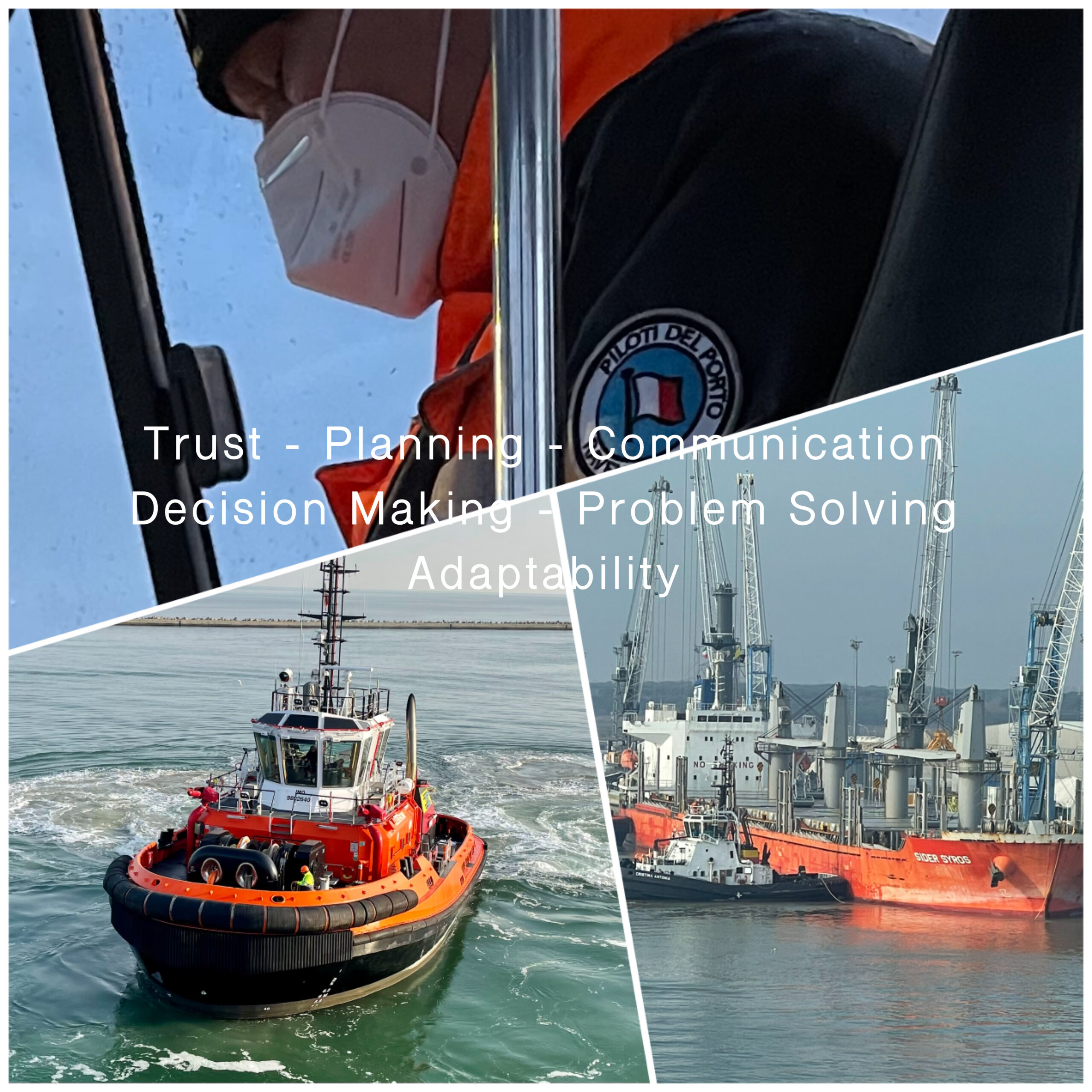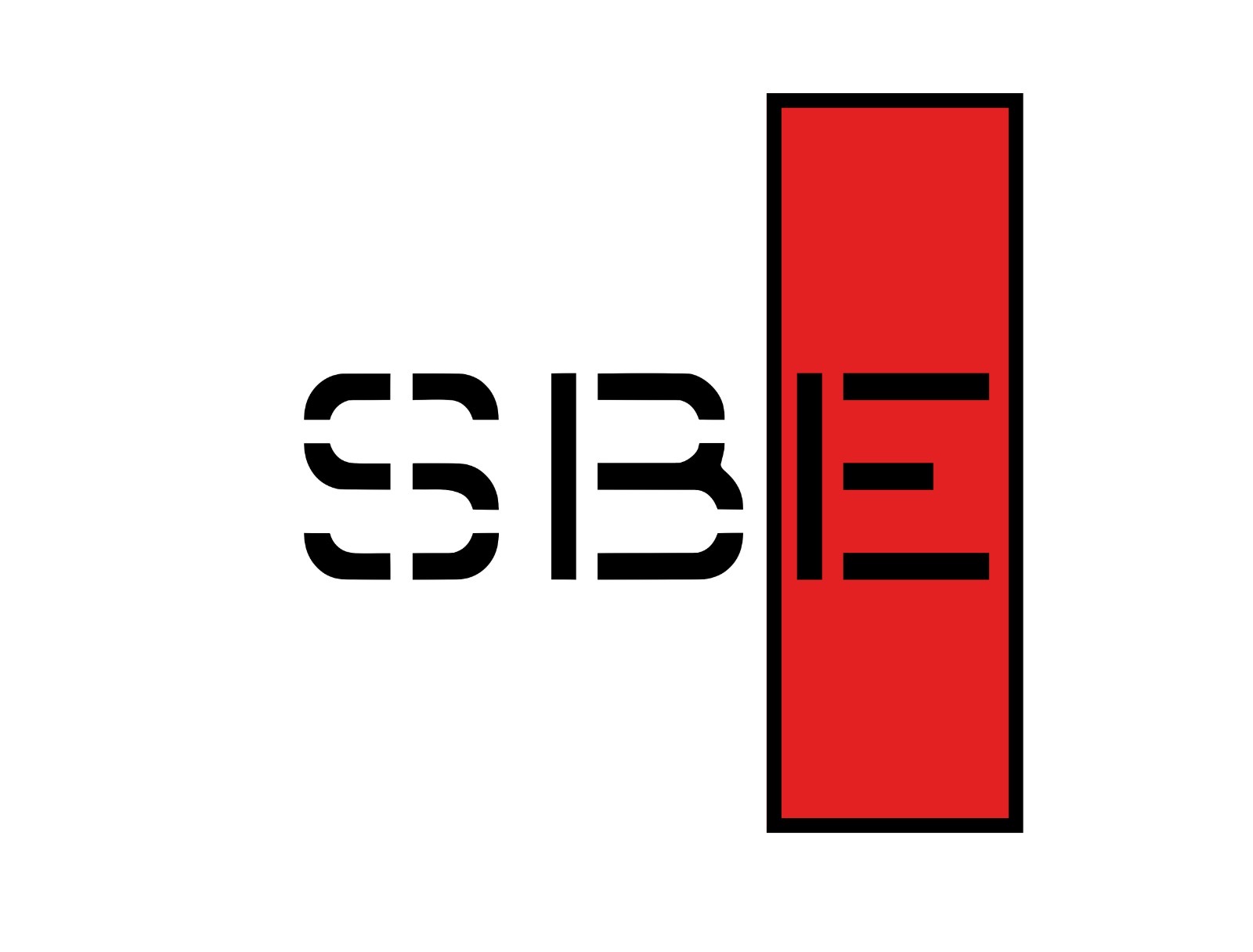Teamwork: Master, Pilot and Tug’s Captain
The relationship between the pilot and the tugboat captain must result from excellent mutual professional knowledge based on a sense of seafaring, trust, collaboration, skill, respect, and esteem. There are better pilots than others and more experienced tugboat captains. Still, the basic concept remains to know the modus operandi of the person you are working with.

It is beneficial for the pilot – and not only in the first phase of his career – to experience some manoeuvre from the tugboat’s bridge. In this way, he will have the possibility to “face” the difficulties in remaining almost in contact with the bow of the moving ship, understanding how hard pushes the wake of a propeller that suddenly starts, experiencing the perspective of someone in a delicate position between the vessel and an obstacle. At the same time, the rapidly decreasing space/time ratio helps to have an overview more faithful to reality.
Recognizing captains by voice at the VHF can help. With some, you work better than with others, and, in certain situations, harmony could prove to be the decisive added value and the last ace to play.
During the manoeuvre, no one has a clear perception of how each part involved moves:
- The tugboat captain has an excellent view of the obstacles in their proximity, of the interaction forces that influence the tug’s steering they are manning, speed, and so on. Still, their point of view is limited by the ship’s hull, by the non-know response of the rudder and the vessel’s engine towed, and of a whole series of crucial information.
- The ship’s captain may not know the language, the port and all its local regulations, the characteristics of the tugs used, the local traffic, and so on.
- Although he is also objectively limited, the elevated views offer the pilot control over the gaming forces. The pilot has the advantage of being in direct contact with the ship’s captain and his crew, the tug’s captain, the other vessel and their pilots and all the port operators. He knows precisely the working area where he handles an ‘enormous’ number of ships per year, in every weather condition.
The master remains the decisive filter between what the pilot suggests and the actual execution. The experience in ship handling places the pilot in the most favourable position to direct the manoeuvre.
Below is a to-do or not-to-do list:
- If we secured the tugs out of the sheltered waters of the harbour, we must not forget that the waves make it roll, endangering the sailors who work on its deck. Therefore, adjusting the speed and setting the course is necessary to make the operation easier.
- The phase in which the tug is made fast is very delicate: to give or receive the towline, it must get close to almost touching the ship while, in the meantime, it disappears from the bridge view. The higher the speed, the more risky the operation becomes.
- If vessel to handle uses two tugs, it is good practice, when possible, to first make fast the stern tug and then the fore one; the opposite is true to let them go: preferably first the forward one and then the aft one. However, in the unfortunate hypothesis of a problem with the fore tug – which is more exposed to the risk of collision – it is always possible to use the aft tug to slow down the speed or help the ship’s steering.
- Always warn tugs of any changes in course and speed; inform them as soon as they are secured, tell them if you intend to change the planned manoeuvre and if you will use the engine or drop the anchors.
- Inform the ship’s master how you intend to use the tugs.
- Specify to the ship’s master where you intend to make fast the tugs and the importance of using a heaving line of adequate weight: too often the wind carries away the messenger with a consequent loss of time, and the longer the interval in which the tugboat remains under the bow of the moving ship, the higher the risk of accidents, without considering that in the meantime the vessel advances with less and less steering ability. But, on the other hand, a heaving line that is too heavy can be dangerous for the tug’s crew.
- The pilot should pay particular attention to the bollard’s SWL compared with the Bollard Pull of the tugs. It often happens when using powerful tugs – that it is necessary to use vessel’s undersized bollards, in the case communicate to the tug’s captain the maximum load that the bollards can tolerate.
- Ensure that the manoeuvring station’s personnel are safe from the tugboat towing line.
- Send the crew to the manoeuvring station in time. Sometimes the mooring position is close to the port entrance, other times, due to severe weather conditions, it becomes necessary to proceed inside at high speed, or it may arise crew’s difficulty in making fast the tugboats. Whatever the reason, wasting time because crew arrive late in their stations could trigger a chain of problems.
- Avoid course and speed changes while making fast the tugs or, if necessary, inform the tug’s captain for their assessment and action.
- Avoid communicating with the tug boat using its captain’s name as the bridge team or other participants in the manoeuvre may not understand to who you are referring. It is undoubtedly more effective to call him indicating his position in or by the tug’s name.
- All the VHF communication must follow a “Closed-loop” procedure, so when the sender gives a message, the receiver repeats this back to avoid misunderstanding.
- Avoid the ship’s crew launching the heaving line from the centre, but from one side, to leave the vessel free course to reduce the risk of collision.
- Follow the captain’s instruction when letting go of the tug’s line, which generally means: carefully slack the line when releasing the stern tugboat. It is to prevent the tow line from tangling in the propellers. Likewise, quick-release the bow tug to prevent it from remaining longer than necessary in a dangerous position near the ship’s bow.
- Ask if a training captain, or a captain who is not yet perfectly familiar with the port, is in charge of the tugboat. That, too, is a problem that never fails to occur. The training captain, by definition, is a person who is not yet practical and, albeit flanked by an experienced captain, works with a “fluidity” – if we can define it that way – with timing and with the minimum vision of the manoeuvre that, at least, must yet to be perfected. It involves a criticality that the pilot must know to take into account.
- The length of the towing line, as we have seen, has its importance, positives on the one hand and negatives on the other. If the pilot disagrees with the length set by the tug’s captain, he must discuss it with him.
- There are ships, especially the latest generation large containers, with propeller shapes optimized for forwarding motion. For example, it can happen to manoeuvre ships with a dead slow ahead of 11 knots compared to a dead slow astern of 80% lower. When tugs have to be fastened or released, this can be a risk factor. Therefore, it is necessary to inform the tugboats of the situation and establish a strategy to work safely. For example, stop the engine proceeding with residual headway; make fast the stern tug and use it to slow down the ship’s speed; decide to keep the fore tug in assistance and then secure, at reduced navigation speed, just before reaching the turning point; and so on.
- For nighttime towing, do not underestimate the negative influence of forwarding facing lights – which can dazzle the tugboat captain – and by reverse, the tug’s spotlights, which may limit the view from the bridge.
- Keep in mind that a too high speed of the ship causes an increase in the interaction forces between the vessel and the tug, increases the stopping distance and decreases the effectiveness of the tugboat action.
